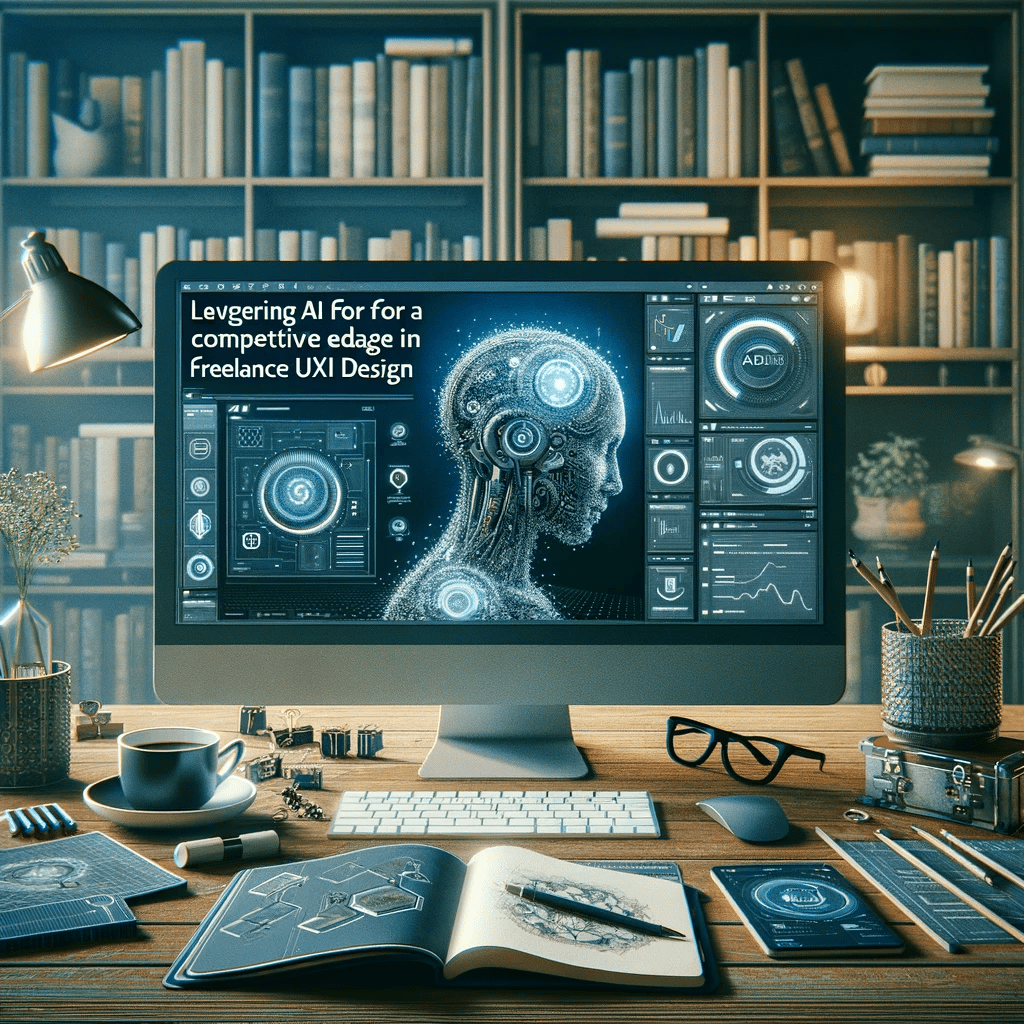- Empowering Small Business Owners with AI
- Posts
- Leveraging AI for a Competitive Edge in Freelance UX/UI Design
Leveraging AI for a Competitive Edge in Freelance UX/UI Design

Incorporating AI into UX/UI design can significantly streamline designers’ workflow, enhance creativity, and even provide insights into user behavior that might otherwise be overlooked. Here’s how you can leverage AI to make your work more efficient and productive:
Automated User Research: AI tools can analyze large sets of user data to identify patterns and trends. You can use these insights to inform your design decisions and create more user-centric interfaces.
Rapid Prototyping: AI can help to quickly generate design layouts and prototypes based on certain parameters you set. This can save time in the early stages of design by automating the creation of wireframes and mockups.
Personalization at Scale: AI algorithms can create personalized experiences for users by adapting the UI to their behavior and preferences. This is something that can be prototyped and tested with AI to ensure designs meet individual user needs.
Efficiency in Design Operations: AI can handle repetitive tasks such as resizing components for different screen sizes, generating code from design files, or organizing assets. This frees up more time for creative work.
Content Generation: AI can be used to generate text, images, and even animations that can be used in your designs. For example, using DALL-E to create unique illustrations or icons tailored to your project’s theme.
Accessibility: AI can help to ensure your designs are accessible to all users by suggesting improvements or identifying elements that may not meet accessibility standards.
Predictive Analysis: AI can predict how changes in design might affect user behavior. By analyzing previous user interactions, AI can forecast the impact of design changes before they are implemented.
A/B Testing: AI can automate the process of A/B testing by not only running the tests but also analyzing the results to determine which design performs better.
Natural Language Processing (NLP): AI-powered chatbots and voice assistants can be prototyped to enhance the user interface, providing a hands-free and conversational interaction with your product.
Learning and Adaptation: AI systems can learn from each interaction, meaning that the more they are used, the better they become at predicting user needs and preferences, helping to continuously improve the design.
Taking Rapid prototyping as an example, which with the assistance of AI can dramatically accelerate the design process. Let's delve into how you can utilize AI for rapid prototyping through a step-by-step example:
Step 1: Define Your Design Requirements Before you begin, you should have a clear understanding of your design goals. This may include:
Target audience and user personas
Key features and functionalities
Desired look and feel (color scheme, typography, etc.)
Layout preferences (grid, single page, dashboard, etc.)
Step 2: Choose an AI-Enabled Prototyping Tool There are several AI-enabled tools available for rapid prototyping, such as:
Adobe XD's Auto-Animate
Figma with plugins like Autoflow for flow diagrams
Sketch with Assistant by Skaffolder for code generation
Uizard, which turns hand-drawn sketches into digital wireframes
For this example, let's assume you're using Uizard.
Step 3: Prepare Your Initial Sketches If you’re starting from scratch, you can sketch your ideas on paper. Uizard can recognize hand-drawn elements and translate them into digital formats. Alternatively, you could create a rough layout using a digital tool.
Step 4: Import Sketches into the AI Tool With Uizard, you can take pictures of your paper sketches or upload your digital sketches. The AI will analyze the content and create a wireframe that reflects the layout of your designs.
Step 5: Refine Your Wireframes Once the initial wireframe is generated by AI, you can start refining the design. This involves:
Adjusting the layout
Tweaking UI elements
Applying color schemes
Inserting real content (text, images, etc.)
During this phase, you can also add interactivity to your wireframes, turning them into clickable prototypes.
Step 6: Iterate Based on AI Suggestions Some AI tools will offer suggestions to improve your design. For example, it may propose different layouts or UI elements that are more suited to your user personas. Use these suggestions to iterate on your design.
Step 7: Add Interactions and Animations Many AI-enabled tools allow you to add interactions and animations with ease. Define the user journey and apply transitions and actions to your elements.
Step 8: Conduct User Testing You can now use this prototype for user testing. AI tools can also assist in this process by facilitating remote testing and collecting user interaction data.
Step 9: Analyze Feedback with AI Some AI tools can help analyze feedback by identifying common themes or points of confusion. Use this analysis to make informed changes to your prototype.
Step 10: Finalize Prototype or Move to High-Fidelity Design After refining your prototype based on user feedback, you can either finalize your low-fidelity prototype or use the AI tool to help transition to a high-fidelity design for further development.
Bonus Step: Handoff to Development If your prototyping tool has the capability (like Sketch with Assistant by Skaffolder), you can then convert your high-fidelity prototype into code or use it to communicate design specifications to your development team.
Remember, while AI can significantly speed up the prototyping process, it's still crucial to apply your design expertise to make the final decisions. AI is a tool to enhance your skills, not replace them. Use it to handle the more repetitive and time-consuming tasks while you focus on the creative and user experience aspects of design.